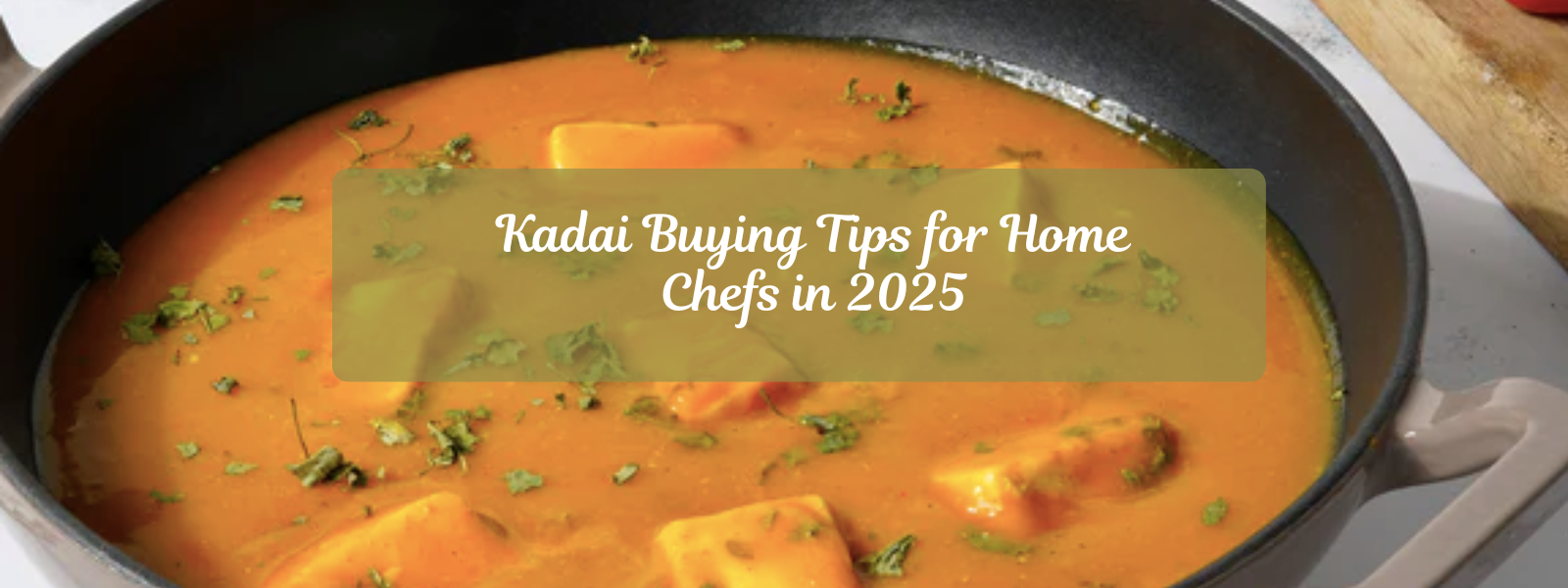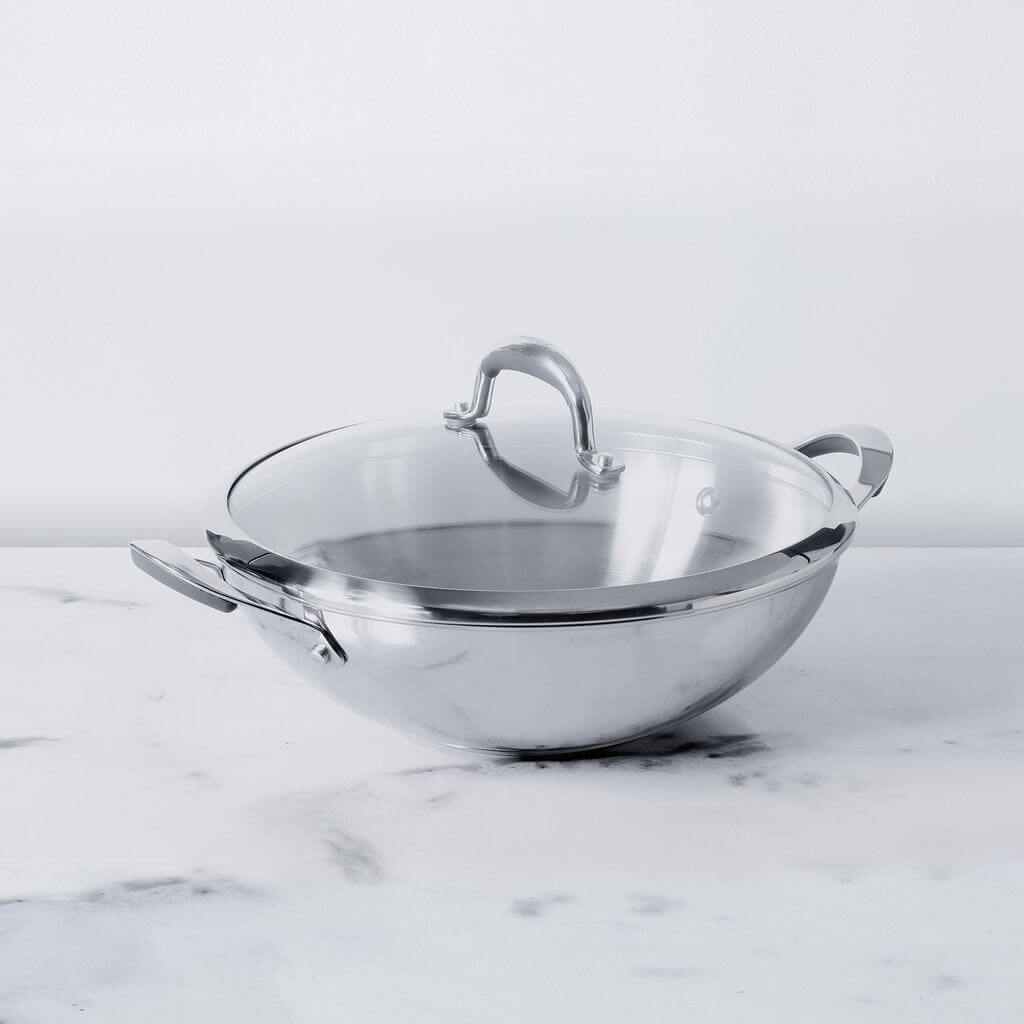Indian curries are rich, flavourful, and layered—thanks to techniques like sautéing onions, blooming spices, and slow simmering. But one common challenge home cooks face is burning the base, especially when working with thick gravies, onion-tomato masalas, or slow-reduced recipes. When the base sticks or burns, the entire dish develops a bitter undertone that’s impossible to correct.
The good news? With the right techniques, heat control, and especially the right cookware, you can make perfectly cooked curries every time—without scorching the masala.
This guide walks you through why bases burn, how to prevent it, and which cookware features make the biggest difference for Indian cooking.
Table of Contents
- 1. Why Does Curry Base Burn?
- 2. How to Prevent Burning When Cooking Indian Curries
- 3. Choose Heavy-Gauge Hard-Anodized Cookware
- 4. Control the Heat During Masala Sautéing
- 5. Add Masala in the Right Order
- 6. Use Lids to Keep Moisture In
- 7. Deglaze Often
- 8. Choose the Right Size of Cookware
- 9. Use Cookware Compatible with Both Gas and Induction
- 10. Conclusion
Why Does Curry Base Burn?
Burning usually happens when:
-
The pan heats unevenly
-
You cook on high heat while the masala still contains moisture
-
Spices or onion paste stick to low-quality surfaces
-
The pan material does not distribute heat properly
-
The masala isn't stirred regularly during the sautéing stage
-
You use cookware not suited for slow cooking
Identifying these issues is the first step. The next is fixing them with better techniques and smarter cookware choices.
How to Prevent Burning When Cooking Indian Curries
Use Cookware with Safe, High-Quality Non-Stick Coating
A huge reason masalas stick is poor coating or worn-out surfaces.
Premium cookware, like Circulon, with US FDA and European Food Safety Standards–approved coatings ensures efficient release of masala without requiring excess oil. A 100% toxin-free surface also gives peace of mind—especially when preparing daily curries.
Advanced cookware featuring a patented Hi-Low food-release system, like the technology used by Circulon, prevents ingredients from clinging to the surface and allows masala to glide smoothly, even during high-heat sautéing. This dramatically reduces burning during the base-building stage.
Meyer Cast Iron Dutch Oven/Sauteuse with Glass Lid, 24cm
Choose Heavy-Gauge Hard-Anodized Cookware
Hard-anodized pans are ideal for Indian kitchens because they:
- Conduct heat evenly
- Reduce hotspots (major cause of burnt masala)
- Are twice as hard as stainless steel
- Withstand long cooking durations
A heavy-bottom kadai or sauté pan gives better control when bhuno-ing onion-tomato masala for butter chicken, paneer gravy, chole, or dals.
The durability of high-quality hard-anodized cookware—similar to those known for their outstanding strength—ensures reliable performance for years without warping.
Control the Heat During Masala Sautéing
A burnt base almost always starts with high heat.
Follow this golden rule:
Start on medium-high, then reduce to medium or low as soon as the onions soften.
Tips:
- Let onions sweat before browning
- Add salt early to help them release moisture
- Avoid leaving the masala unattended
- Add splashes of water whenever you see sticking
This method prevents caramelization from turning into charring.
Add Masala in the Right Order
Indian cooking relies heavily on sequencing:
-
Heat oil
-
Add whole spices
-
Add onion
-
Add ginger-garlic
-
Add tomatoes
-
Add powdered spices
-
Cook on low heat
If you add powdered spices too early, they burn quickly.
If you add tomatoes too late, the onion paste may stick.
Following proper sequencing helps the base stay moist.
Use Lids to Keep Moisture In
A tight, shatter-resistant tempered glass lid helps prevent drying.
Lids trap steam, which:
- Softens onions faster
- Helps masala cook evenly
- Prevents the bottom from drying out
- Reduces oil usage
A well-designed lid also supports healthier, flavourful cooking.
Deglaze Often
Whenever you see brown bits forming:
-
Add 1–2 tbsp water
-
Scrape gently with a silicone spatula
-
Lower the heat
This keeps the masala moving and stops the base from burning.
Choose the Right Size of Cookware
If your pan is too small, the masala sits too deep and burns.
If it’s too large, the masala spreads thinly and dries quickly.
For most households:
-
22–26 cm kadai is ideal for 2–4 people
-
28–30 cm kadai suits larger families
A well-sized pan ensures balanced heat distribution and proper moisture retention.
Use Cookware Compatible with Both Gas and Induction
Consistent heat is essential for gravy-based cooking.
Cookware that works efficiently on gas, induction, and other cooktops helps you maintain the right temperature without sudden changes. Flat, stable bases ensure even heat flow across the masala.
How Premium Cookware Helps Prevent Burning
When choosing cookware for everyday Indian curries, look for:
Toxin-free construction
Ensures no harmful chemicals leach into food.
Non-stick surface with patented release systems
Minimizes sticking during bhunoing.
Hard-anodized heavy-gauge body
Prevents hotspots.
Stay-cool riveted handles
Allows safe stirring and lifting during long cooking sessions.
Tempered glass lids
Retain moisture for slow-simmered gravies.
Compatibility with all cooktops
Offers heat stability on gas and induction.
Cookware that brings these elements together—similar to advanced models known for lifetime warranties and high-end patented surfaces—can greatly reduce the risk of burning curry bases.
Conclusion
Cooking Indian curries without burning the base requires the right balance of technique, heat control, and cookware selection. When you understand how masalas behave on heat and pair that knowledge with high-quality cookware, the process becomes effortless. Choosing pans with top-tier, toxin-free non-stick coatings, sturdy hard-anodized construction, and moisture-locking lids can transform the way you cook—making even complex gravies simple and enjoyable.
Technologies like the patented Hi-Low surface system, seen in advanced cookware brands including Circulon, ensure that your masala slides smoothly instead of sticking, while the robust build of premium cookware prevents hot spots that lead to burning. With the right setup, you can cook confidently, knowing your gravies will turn out rich, aromatic, and perfectly sautéed every time.
By combining smart cookware choices with mindful cooking practices—like proper sequencing, adding moisture when needed, and controlling heat—you can completely eliminate the problem of burnt bases and elevate your everyday Indian meals.













Leave a comment